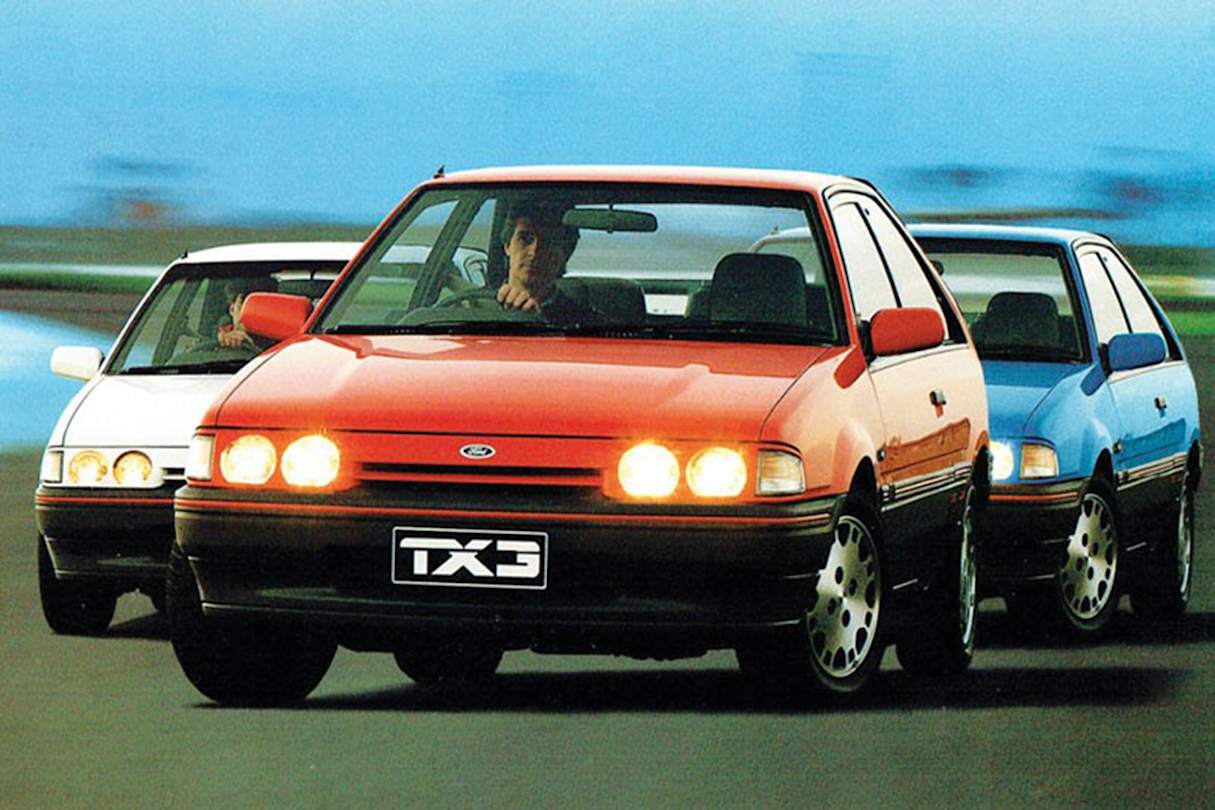If you’re happy to look outside of Australian built cars, there are a number of excellent sports cars available that will to climb in value and desirability.
Here’s a small list of five Japanese sports cars that have flown under the radar, and if you can get your hands on a good example, do not miss the opportunity to buy.

1) Nissan EXA
The Nissan EXA wasn’t the most popular sports car back in the '80s, but it was definitely one of the most flexible.
It was available with a targa top, which gave the car a sporty feel much like the Nissan Z cars. It also featured pop-up headlights, alloy wheels, a body kit, and two seats that made it quite a compact and a zippy little roadster!
Those who are old enough might remember the Nissan EXA being used as a race car in the celebrity race at the Adelaide Grand Prix in 1988.
Essentially, the EXA was based on the Pulsar – so don’t expect monster performance statistics or mind blowing speeds, but for a few thousand dollars this future classic is worth the space in the garage – if only to be used on sunny days!

2) Mistubishi Sigma GSR
Australian made classics are normally attributed to the big three (Holden, Ford, Chrysler), so by extension the Sigma GSR might just fit the bill.
Mitsubishi took over Chrysler in 1981, and continued producing cars at the Tonsley Park manufacturing facility. With a 2.6-litre engine paired with a five-speed manual, the Sigma GSR packed a solid amount of performance.
It also had the sporty looks, which set it apart from the more bland and generic Sigma range. Standard equipment included four-wheel disc brakes, a sports steering wheel, alloy wheels, and some nice red highlights on the body and interior.
Aussie made cars are no longer available to buy new, making the ones we did build in the past all the more relevant and valuable.

3) Ford Laser TX3 Turbo AWD
The Laser TX3 is the definition of a hot hatch. Small, powerful, and sporty in style – with value and performance the key determining factors.
The ultimate TX3 is arguably the KE Laser TX3 Turbo AWD. Unmistakable looks, thanks to the twin-light front headlights and red pinstripes surrounding the body, are surprisingly rare to see on the road these days. Sadly, natural attrition claimed many of the fully imported AWD Laser TX3 models, a potent combination of 100kW turbocharged engine and a light (1000kg) kerb weight made the TX3 quite a handful to drive.
Coming across an unmodified car with a crash-free history is rare, but would certainly be worth the money and make a safe investment for the future.

4) Toyota Celica
With a nameplate that has a 35 year history, you cannot look past the Toyota Celica.
The 1970s chrome bumper cars are rare and desirable these days, so it's logical that the following models will appeal to enthusiasts as well. The third-generation Celica that was sold in Australia in the '80s has great appeal and offers drivers plenty in the way of driving experience.
The facelifted A60 hatchback body that featured the 2.4-litre four-cylinder engine pumped out 87kW of power, which is plenty in such a small and nimble chassis. It also had pop-up headlights and a stylish modern look that appealed to enthusiasts back in the '80s (and also today).
Toyota is renowned for reliability as well, so you’re sure to find a Celica or two still on the road.

5) Nissan Pulsar ET Turbo
A direct rival to the Laser TX3 Turbo and sharing the DNA of the Nissan EXA, the Pulsar ET Turbo was a favourite with hot hatch enthusiasts in the 1980s.
It may not have had the unique sporty style of the sports coupes, nor did it have the aerodynamics, but the fully imported ET Turbo had the sleeper look covered – easily mistaken for a regular Pulsar on the street.
The ET Turbo subscribed to the standard formula of a high power-to-weight ratio by not only featuring a 1.6-litre turbocharged four-cylinder motor, but also a low kerb weight of just 950kg. With that recipe, and only available in five-speed manual transmission, meant that the ET Pulsar was a driver's car.
Many met the same fate as the Laser TX3 (write offs!) but there are niche collectors out there with the right cars tucked away – just waiting for a time to get them back on the road to enjoy.
These five cars are just an example of what was to be celebrated in the 1980s – a bunch of Japanese sports cars that made an impact on the Australian motoring enthusiast. Given the opportunity, securing any of these five examples would provide the owner plenty of enjoyable driving – and an opportunity for their investment to grow.







.jpg)
.jpg)

.jpg)